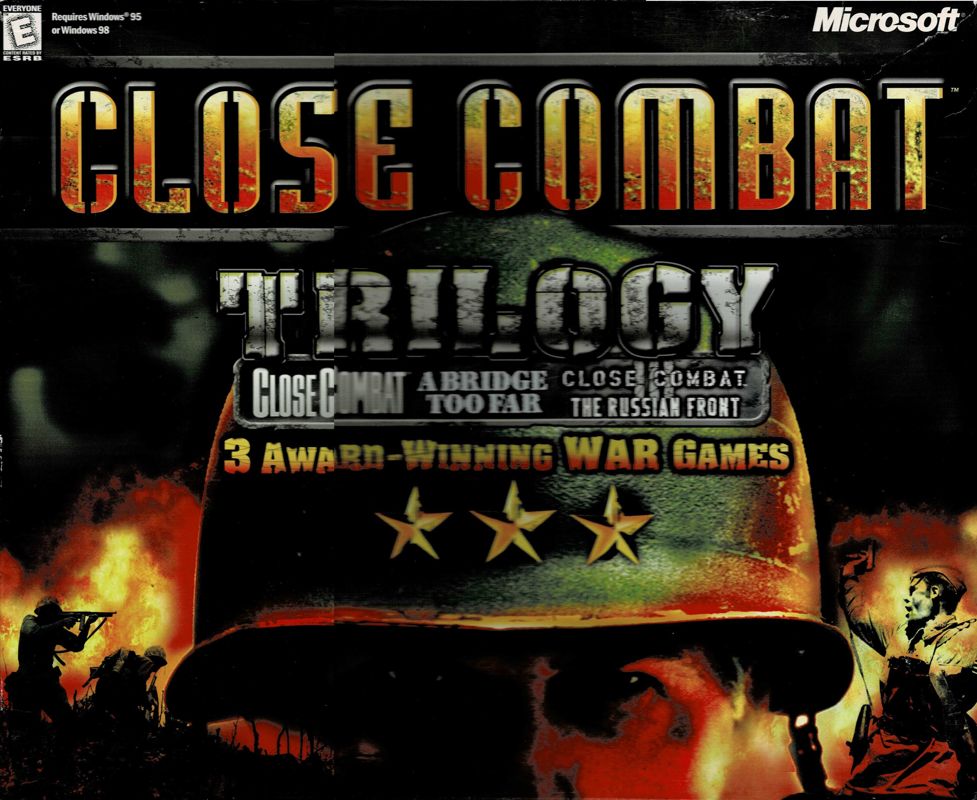Retro Replay Review
Gameplay
Close Combat Trilogy delivers a deep, real-time tactical experience across three seminal World War II theaters. In Close Combat, skirmishes on the Western Front unfold with tight controls and an emphasis on granular unit management. Every squad member has individual morale, ammunition, and fatigue levels, forcing players to weigh the risk of every advance or defensive stand. The sense of vulnerability keeps each firefight tense, whether you’re maneuvering rifle squads through hedgerows or co-ordinating a bold artillery strike.
Close Combat: A Bridge Too Far expands on the original’s foundations by introducing more varied unit types—glider-borne paratroopers, armored columns, and engineer teams tasked with clearing obstacles. The addition of airborne drops adds unpredictability to the battles, as both you and your AI opponent must adapt to forces appearing behind lines. Micro-management is still key, but the larger, more dynamic maps reward flexible thinking and combined-arms tactics.
Close Combat III: The Russian Front ramps up intensity with brutal winter conditions and massive Soviet formations. Here, weather and terrain can halt entire advances, so timing and supply lines are vital. The trilogy’s refined interface lets you zoom in on individual soldiers or pull back for a strategic overview. Whether guiding a company of tanks through muddy roads or slamming infantry into fortified towns, the controls remain responsive, and the AI feels challenging without resorting to unfair cheats.
Graphics
Though originally released in the mid-1990s, each game in the Close Combat Trilogy has been remastered with higher resolutions and clearer UI elements. The top-down perspective retains its clarity, with detailed sprites representing soldiers, vehicles, and gun emplacements. Textures on buildings and terrain have been sharpened, making trenches, forest canopies, and urban rubble more visually distinct. The color palette has been rebalanced too, ensuring muddy fields, snow-covered forests, and ruined villages each pop on-screen.
Animations are smooth, and unit icons now feature subtle shadowing for depth. You’ll notice small touches, like muzzle flashes, dust trails behind moving armor, and smoke plumes from artillery impacts. These enhancements do more than please the eye—they contribute useful feedback in the heat of battle. Enemy units obscured by foliage remain hidden until you flush them out, and explosions obscure vision realistically, forcing you to probe cautiously rather than blindly charge.
The revamped UI streamlines essential information without cluttering the battlefield. Unit status panels show morale, stamina, and ammo at a glance, and tooltips help newcomers understand specialized commands. Menus have been reorganized for quick access to reinforcements, map overlays, and replay functions. These graphical updates make the trilogy feel modern without sacrificing the series’ tactical clarity.
Story
Close Combat Trilogy isn’t narrative-focused in the traditional sense, but each campaign conveys a compelling sense of historical immersion. The original Close Combat pits US forces against seasoned German defenders in Normandy, capturing the tension of those early beachhead engagements. Briefings frame every mission in real-world context, with archival photos and maps setting the stage for each objective.
In A Bridge Too Far, you follow Operation Market Garden, the daring Allied attempt to secure key bridges in the Netherlands. The story emerges organically through mission scripting and dynamic events—supply drops delayed, unexpected Panzer counterattacks, and civilian crowds in liberated towns. You get the sense of both the Allies’ optimism and the ever-present risk of failure hanging over every airborne assault.
Close Combat III transports you to the Eastern Front’s icy hellscape, where the Soviet offensive grinds down German defenses. The narrative here is one of attrition and adaptability: frozen rivers block your advance, muddy roads choke supply wagons, and improvised trench systems sap momentum. While there’s no central character arc, each scenario weaves together to portray the ebb and flow of one of WWII’s most brutal theaters.
Overall Experience
The Close Combat Trilogy offers an unparalleled blend of accessibility and depth for historical tactics fans. Jumping into any of the three titles, you’ll find a learning curve that rewards patience and thoughtful planning. The historical authenticity shines through in unit behavior, weapon effectiveness, and morale systems—no two engagements feel alike, and every decision carries weight.
The remastered compilation unifies control schemes, campaign progress, and multiplayer lobbies, enabling you to dive into solo or co-op matches seamlessly. Steam Workshop support adds user-made scenarios and balance tweaks, extending the trilogy’s replay value well beyond the campaign missions. The community remains active, sharing custom maps and historical recreations that further enrich the experience.
Whether you’re a longtime Close Combat veteran or new to tactical wargaming, this trilogy represents a landmark achievement. Each installment refines and expands upon its predecessor, resulting in a cohesive package that honors the series’ legacy while meeting modern expectations. For those seeking thoughtful, historically grounded battles and tense, reactive AI, Close Combat Trilogy is an essential collection.
 Retro Replay Retro Replay gaming reviews, news, emulation, geek stuff and more!
Retro Replay Retro Replay gaming reviews, news, emulation, geek stuff and more!




Reviews
There are no reviews yet.